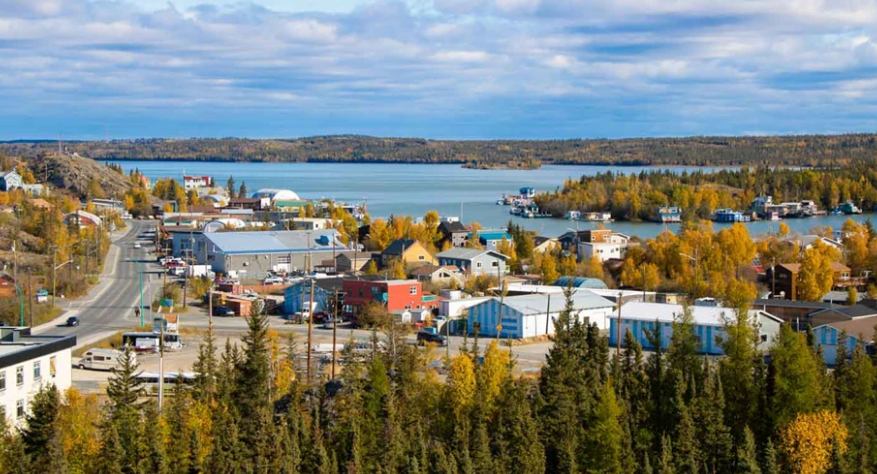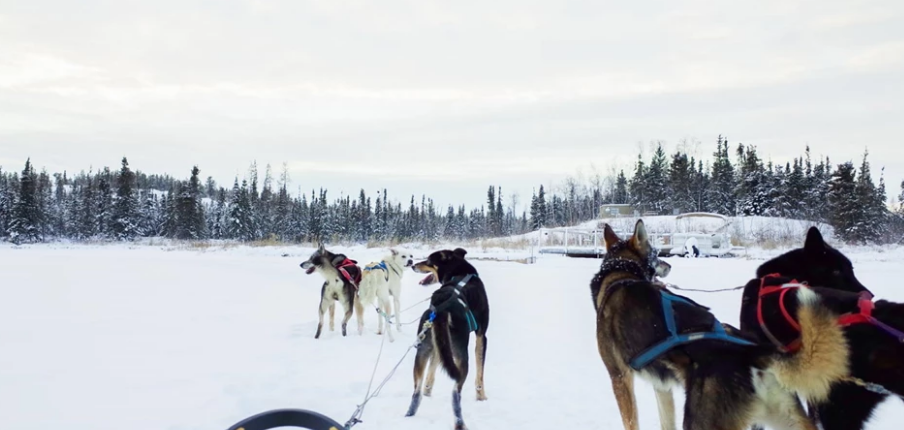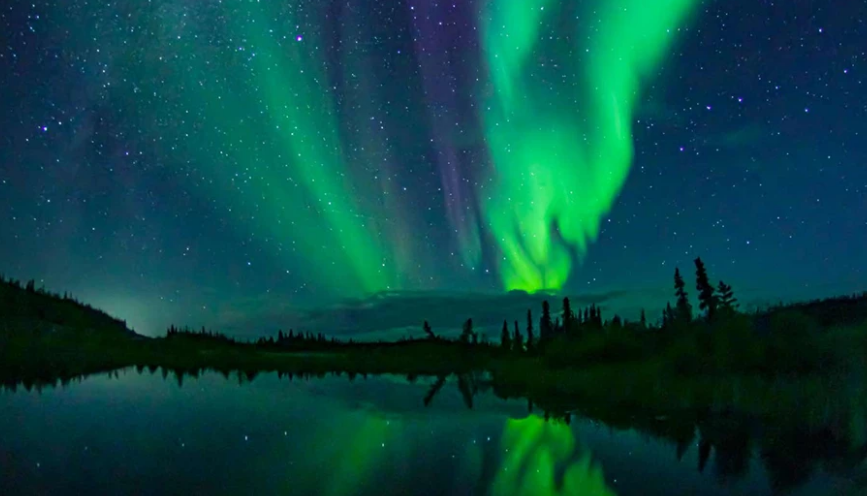Yellowknife: Exploring the Arctic Gem of Canada
Introduction
Nestled within the mesmerizing landscapes of Canada’s North Yellowknife stands as a beacon of rugged beauty and cultural richness. As the capital of Canada’s Northwest Territories, this vibrant city is characterized by its unique blend of natural wonders, indigenous heritage, and modern amenities. This comprehensive exploration of Yellowknife delves into its history, geographic wonders, cultural tapestry, economic significance, and the experiences it offers to intrepid travelers.

A Glimpse into History
Yellowknife’s history is intertwined with the allure of gold. Originally established as a mining town during the 1930s gold rush, the city’s name originates from the Yellowknives Dene First Nations people, who have inhabited the region for generations. This history, layered with indigenous cultures and European influences, enriches the city’s narrative.
Geographical Marvels
Perched on the northern shores of Great Slave Lake, the deepest lake in North America, Yellowknife is a gateway to remarkable wilderness. The Northern Lights, a celestial dance of vibrant colors, grace the night skies during the colder months, offering a spectacle unlike any other. Moreover, the Midnight Sun during summer creates an enchanting period of continuous daylight.
Cultural Diversity and Indigenous Heritage
Yellowknife thrives as a cultural melting pot, echoing the spirit of Canada’s mosaic identity. Indigenous cultures play an integral role in the city’s fabric, with art, music, and traditions celebrating the rich heritage of the Dene and Inuit communities. Local art galleries and cultural centers exhibit the creative expressions of these indigenous communities.
Economic Hub and Natural Resources
While its history is rooted in gold mining, Yellowknife has diversified its economy to encompass diamond mining, fishing, and tourism. The city’s role as the regional economic hub is fortified by its proximity to the Arctic Circle, making it a strategic center for economic activities and transportation.
Gateway to Adventure
For adventure seekers, Yellowknife is an unrivaled destination. The vast wilderness surrounding the city offers opportunities for hiking, kayaking, dog sledding, and ice fishing. Exploring the tundra’s flora and fauna, venturing into the ice caves, or embarking on a snowmobile journey are experiences that resonate deeply.
A Vibrant Cityscape
Yellowknife seamlessly combines its rustic charm with contemporary amenities. The city boasts modern infrastructure, a diverse culinary scene, and a thriving arts and entertainment scene. Its welcoming atmosphere makes it a friendly locale for both residents and visitors alike.
Preservation of Natural Beauty
Environmental preservation is a cornerstone of Yellowknife’s ethos. The city’s residents and governing bodies are dedicated to maintaining the ecological integrity of the surrounding landscapes, ensuring the sustainability of its pristine environment for generations to come.
Conclusion: A Northern Oasis
Yellowknife’s allure extends far beyond its geographical coordinates. It embodies the spirit of adventure, the celebration of cultural diversity, and the harmonious coexistence of modernity and nature. As a testament to human resilience in the face of the Arctic’s challenges, Yellowknife stands as a vibrant testament to the human connection with the wild, a living canvas that offers an unforgettable experience to those who dare to explore its treasures.
Yellowknife Travel FAQ: Your Ultimate Guide to Exploring the Arctic Wonder
1. Where is Yellowknife located? Yellowknife is situated in Canada’s Northwest Territories, on the northern shores of Great Slave Lake.
2. What is the best time to visit Yellowknife? For witnessing the Northern Lights, the best time is during the colder months, from late September to early April. The Midnight Sun phenomenon can be experienced during the summer months from June to July.
3. How can I reach Yellowknife? You can fly into Yellowknife’s airport, which is well-connected to major Canadian cities. Alternatively, road travel is possible through the Mackenzie Highway.
4. What are the must-see attractions in Yellowknife? Some must-see attractions include the Northern Lights, Great Slave Lake, the Prince of Wales Northern Heritage Centre, and the Ice Road (in winter).
5. What outdoor activities are available in Yellowknife? Yellowknife offers a range of outdoor activities such as hiking, fishing, kayaking, dog sledding, and snowmobiling.
6. Is Yellowknife safe for travelers? Yellowknife is generally considered safe for travelers. However, like any destination, it’s important to exercise basic precautions and be aware of the local environment.
7. Can I see wildlife in Yellowknife? Yes, Yellowknife is home to various wildlife species, including caribou, moose, foxes, and a variety of bird species. Remember to observe animals from a safe distance.
8. Are there accommodations available in Yellowknife? Yes, Yellowknife offers a range of accommodations, including hotels, lodges, and bed-and-breakfast options.
9. Can I experience indigenous culture in Yellowknife? Absolutely. Yellowknife celebrates its indigenous heritage through art, music, cultural centers, and events that provide insights into the local Dene and Inuit cultures.
10. What is the local cuisine like in Yellowknife? Yellowknife offers a diverse culinary scene, often featuring local game meats, fish, and regional ingredients. Many restaurants offer a blend of indigenous and modern cuisine.
11. Are there guided tours available in Yellowknife? Yes, there are various guided tours available, including Northern Lights tours, wildlife tours, cultural tours, and more.
12. Can I rent equipment for outdoor activities in Yellowknife? Yes, many local businesses offer equipment rentals for activities like fishing, kayaking, and winter sports.
13. Is Wi-Fi and cell phone reception available in Yellowknife? Yes, Wi-Fi and cell phone reception are available in most parts of Yellowknife.
14. What’s the currency used in Yellowknife? The currency used in Yellowknife, like the rest of Canada, is the Canadian Dollar (CAD).
15. Can I see the Midnight Sun and Northern Lights in the same trip? Yes, if you time your visit correctly, you can experience both the Midnight Sun and the Northern Lights during your stay in Yellowknife.

